 |
 |
 |
| |
Recovery of Renal Function and Virologic Suppression Following Tenofovir Discontinuation
|
| |
| |
Reported by Jules Levin
IDSA Oct 17-21 2012 San Diego
Francine Touzard Romo1,2, Britt Livak2, Mariam Aziz1,2, Emily Huesgen3, Ben Colton4, Blake Max5, Harold Kessler1, 21Rush University Medical Center, Chicago, IL, USA 2Cook County Health and Hospitals System, Chicago, IL, USA 3University of Illinois at Chicago, Chicago, IL, USA; 4Resurrection Health Care, Chicago, IL, USA; 5Ruth M. Rothstein CORE Center, Chicago, IL, USA.
ABSTRACT
Background: Tenofovir (TDF) is a potent widely used antiretroviral associated with renal toxicity. We describe the trend of renal function recovery and virologic consequences after cessation of TDF secondary to suspected TDF-associated nephrotoxicity.
Methods: Retrospective, single-center, chart review of 241 patients who underwent HLA-B*5701 allele testing between 2007-2010 to identify patients with presumed TDF nephrotoxicity. Demographics, co-morbidities, and markers of HIV and renal function were compared between patients that continued or discontinued TDF at baseline and at 3, 6, and 12months. Factors independently associated with renal function recovery were assessed by multivariable logistic regression.
Results: 80 patients were identified with presumed TDF nephrotoxicity. 84% were male, 74% were African American, median age of 53 years and mean length of TDF use of 27.4months. 69/80 had acute kidney injury (57% with increase in creatinine³ 0.3mg/dl), 9 had proteinuria alone and 2 had Fanconi syndrome. TDF was stopped in 49 patients. Baseline characteristics were similar in patients who continued and stopped TDF. In the unadjusted analysis, baseline chronic kidney disease (p=0.01) was negatively associated with renal function recovery. The majority had complete recovery of their renal function (89%) and only 2/49 (4%) progressed to end stage renal disease despite discontinuation. Differences in renal function recovery were demonstrated at 12 months (83% TDF stopped vs. 57% TDF continued p=0.03). Adjusting for confounding variables, TDF cessation remained strongly associated with improved renal function at 12 months (OR 3.76, CI1.26-11.27, p=0.02).There was no significant difference in virologic response or immunologic status after switching TDF to an alternative agent.
Conclusions: Discontinuation of TDF for suspected renal dysfunction was strongly associated with renal function recovery 12 months after cessation. No difference in virologic suppression was seen after switching TDF.

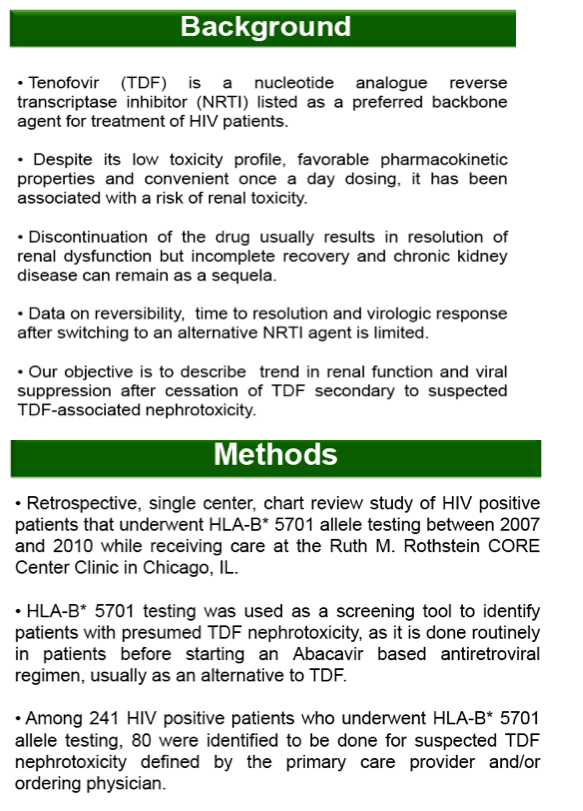
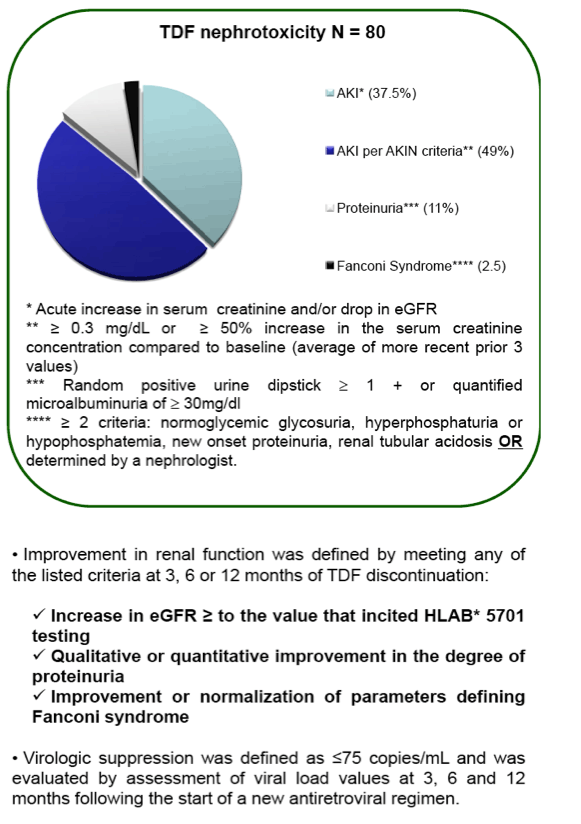
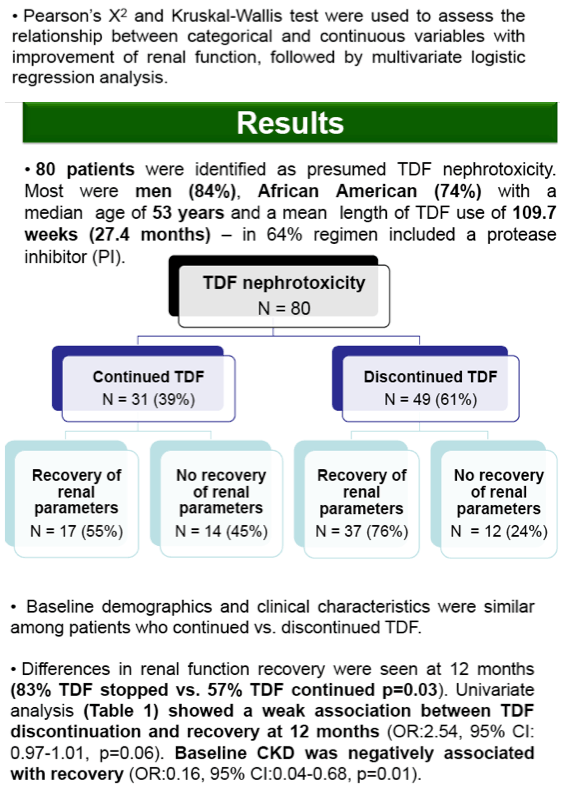
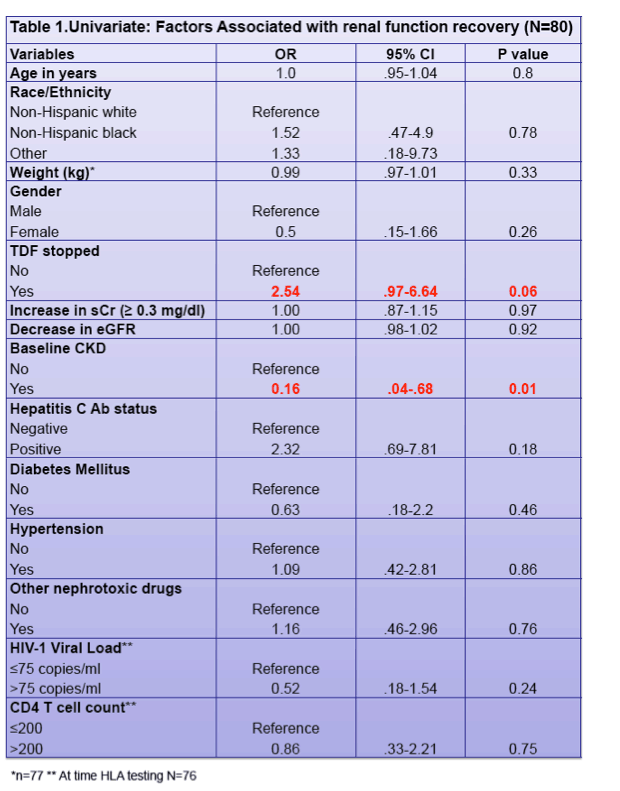
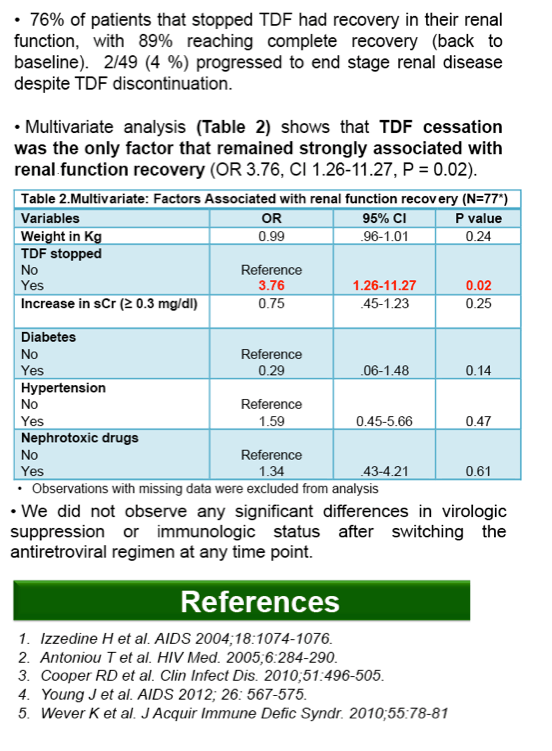
|
| |
|
 |
 |
|
|